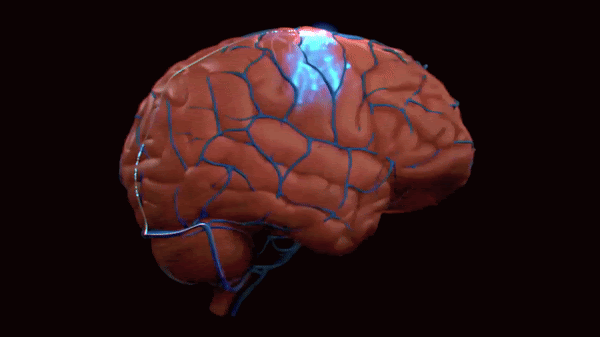Hey Freethinkers,
What’s the secret behind the next evolution in virtual reality realism? It could be “bypassing the skin,” as Jacob Segil, CEO of Afference, told Freethink. Afference is bringing the sense of touch to VR — not through handheld controllers that vibrate but through an interface that “hacks” your nervous system, delivering sensations to your hands via electrical signals as you interact with objects in the virtual world. The Hard Reset team recently met up with Afference to test out the new interface and peer into the future of haptic tech.
Also on deck: Jason Crawford’s newest installment of The Techno-Humanist Manifesto covers how to reclaim meaning in a changing world, Neuralink’s chief competitor explains how it’s tapping into the brain without surgery, and Future Explored investigates Google’s $1 billion bet on Africa’s digital future.
Onwards,
Stephen
HARD RESET
A new class of haptic tech will redraw the borders of reality
Current VR tech delivers big on two senses: sight and hearing. But touch? Not so much. The lack of high-quality haptic feedback can ruin your immersive experience: You go to pick up a mug or a sword in the virtual world, and you feel nothing (besides maybe some vibration from a handheld controller). Afference aims to change that with tech that could prove as transformational for the medium as sound was for film.
FREETHINK VOICES
How to reclaim meaning in a changing world
Does modern life erode meaning or expand our opportunities to find it? In the latest installment of The Techno-Humanist Manifesto, Jason Crawford argues that material progress doesn’t diminish life’s values — it makes them more accessible.
Jason Crawford is the Founder of Roots of Progress and a philosopher of technological advancement. His 11 part series will be released exclusively on Freethink.com. Read Jason’s philosophy of progress and follow along.
FREETHINK FEATURES
How Neuralink’s chief competitor is tapping into the brain without surgery
For people with paralysis or certain neurodegenerative diseases, brain-computer interfaces (BCIs) might be the best hope for regaining the ability to interact with the world. But the most well-known BCI — developed by Elon Musk’s Neuralink — comes with a big catch: It requires brain surgery to install. Synchron, a relatively quiet Neuralink competitor, takes the less invasive route of implanting its devices via the bloodstream. We spoke to Synchron CTO Riki Banerjee to learn how it works — and why privacy concerns around "thought-reading" are overblown.
FUTURE EXPLORED
Google’s $1 billion bet on Africa’s digital future
Google is helping shape Africa’s “digital decade” with a $1 billion investment to expand internet access, lower data costs, and build AI education across sub-Saharan Africa. From undersea cables to AI labs, these efforts could help bring two-thirds of the region online by 2030 — unlocking opportunities for work, education, and economic growth.
WORTH SHARING
Watch: The philosophy of happiness, explained in 10 minutes
Jonny Thomson explains the 3 pillars of happiness from 2,500 years of philosophy
There is a Daoist metaphor I like, and to which I keep coming back.
It asks us to imagine life as a vast, dense, thorny wood through which we have to walk. There’s swampy ground, quicksand, and bracken to navigate, not to mention the howling, toothy things you never actually see. Now, down the middle of these woods is a wide, well-paved road. It’s a shining, marble road with snack huts along the way. To walk along this way — The Way — is when life is happiest. We can chat with each other. We get to laugh.
But, occasionally, we will all stumble off the path. We will look up to find ourselves still walking through the same woods but realizing we have thorn-scratched arms and bog-wet socks. This video is about finding the path again.
Stephen Johnson is the managing editor at Big Think and a writer at Freethink.
















